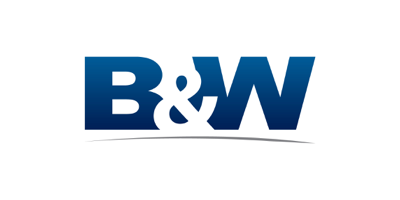B&W Asbestos Lawsuit
By March 1991, a district court in New York consolidated more than 600 cases related to asbestos exposure. These cases included many asbestos-producing companies and Babcock & Wilcox was included. The number of lawsuits eventually climbed to the thousands, adding up to billions in losses.
Anne McPadden, filed on behalf of her deceased husband, who had been exposed many times to asbestos products. In her case, she was able to provide sufficient evidence to back up her wrongful death suit. She received settlements from every company involved beside two, for a total sum of 1.5 million dollars. Babcock & Wilcox was among the companies who settled.
Like many companies who produced asbestos products, lawsuits claimed the company had knowledge of the health risks and didn’t do enough to stop the damage from happening. An article by the Huffpost exposed a memo from a Babcock & Wilcox official that showed they had knowledge of the health risks.
B&W Hazardous Occupations
There are thousands of occupations that were put at risk from exposure to a B&W product. That’s because B&W generator use was so widespread. Occupations that were most at-risk for exposure include:
- Pipefitters
- Iron Pourers
- Crane Operators
- Painters
- Cement Masons
- Longshore Men
- Military Personal
- Petrochemical Workers
- Railroad Workers
- Shipyard Workers
- Utility Workers
How The Asbestos Trust Was Formed
Created by George Babcock and Stephen Wilcox in 1867, Babcock & Wilcox manufactured water-tube boilers for government-funded projects. In 2006, Babcock & Wilcox came out of the bankruptcy court with a successful chapter 11 reorganization plan. As a part of that plan, the personal injury settlement trust was created to help victims affected by asbestos exposure, funded with $1.85 billion to be distributed to victims.
The site Babcock & Wilcox set up to provide information to users about the site provides for two methods of funding, expedited and individual. Expedited reviews are typically set settlement amounts that allow for quicker payouts but less money. An individual review takes more time, but allows for the maximized payout amount.
How Did Babcock and Wilcox Use Asbestos?
B&W did not manufacture asbestos products. Instead, the company purchased them from manufacturers that included the Johns-Manville Corp. Asbestos was used inside B&W’s boilers and on equipment to protect workers and equipment from the high temperatures and to ensure the thermal efficiency of the boilers. The use of asbestos was phased out in the company’s machinery beginning in the early 1970s, the company said. Asbestos was used in conjunction with the following equipment:
- Furnace boilers
- Steam-generating boilers
- Water-tube boilers
- Insulating firebrick
- Gauges
- Stirling boilers
What States Did B&W Operate In
- Ohio
- Georgia
- Indiana
- New Jersey
- North Carolina
- Pennsylvania
- Texas
Babcock and Wilcox Payout Percentages
The current payment percentage is 8.8 percent of the scheduled value for expedited and individual reviews. B&W’s asbestos trust funds, like other asbestos trust funds, only allocate a percentage of the requested amount to ensure there is enough money for all of the claimants. The asbestos trust fund payout may differ by disease and severity of condition:
| Disease | Compensation |
|---|---|
| Mesothelioma | $139,800 |
| Lung Cancer | $45,400 |
| Other Cancer | $5,000 |
Babcock & Wilcox and the Navy
Over the last century Babcock & Wilcox has worked with the U.S. government on many different projects, including manufacturing boilers for the U.S. Navy. When George Babcock and Stephen Wilcox joined forces to create Babcock, Wilcox & Company in 1867, they manufactured some of the highest-quality boilers on the market. By 1902, their machinery was so superb they powered the first subway to run through New York City and the first centralized electric-generating station in the United States.
As the company made a name for itself, government leaders took notice. By 1907, the company now called Babcock & Wilcox (B&W) boilers powered a fleet of U.S. Navy battleships as they embarked on a trip around the world. That was just the beginning of B&W’s long history with government work. At the same time, B&W was continually improving its products and growing its product line. By the late 1950’s, the company moved to coal fuel. Later, B&W built components for the first nuclear submarine and mechanisms for nuclear-powered aircraft carriers. B&W continues to make nuclear and oil generators today.
Find Out if you Qualify
Fill out our quick form and see if you qualify for trust fund compensation
Check NowSources
- B&W. History. Retrieved from http://www.babcock.com/about/Pages/History.aspx
- B&W. Claimant Form. Retrieved from http://www.bwasbestostrust.com/wp-content/uploads/2019/08/BWClaimantInstructionLetterFinal-8_2_19.pdf
- Electric Light & Power. Asbestos liability pushes Babcock & Wilcox to bankruptcy. Retrieved from http://www.elp.com/articles/print/volume-78/issue-3/features/industry-news/asbestos-liability-pushes-babcock-wilcox-to-bankruptcy.html
- HuffPost. Asbestos Industry Covered Up Danger for Decades, and Evades Responsibility Today. Retrieved from https://www.huffpost.com/entry/asbestos-industry-covered_b_10322522
- OpenJurist. Anne McPadden [vs. Asbestos Companies]. Retrieved from https://openjurist.org/995/f2d/343/in-re-joint-eastern-district-and-southern-district-asbestos-litigation/2


